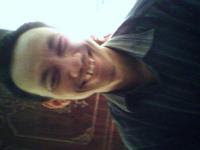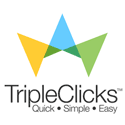Survey is first time children's use of natural remedies has been measured
ATLANTA - More than one in nine children and teens use herbal supplements or some other form of alternative medicine, the government said Wednesday, citing a new national survey.
It's the first time children's use of such remedies, including acupuncture, meditation, and chiropractic care, has been measured. Adult use of alternative treatments remains about the same as it was in 2002 — more than one in three.
Herbal remedies were the top type of alternative medicine for both adults and those under 18. Leading the list for children were echinacea, used for colds, and fish oil, sometimes given for attention deficit hyperactivity disorder.
Such therapies were most often given for head or neck pain, colds and anxiety. Body aches and insomnia were other top reasons kids got alternative therapies, the study found.Given that children are generally pretty healthy, the finding that one in nine uses alternative medicine is "pretty amazing," said one of the study's authors, Richard Nahin of the National Center for Complementary and Alternative Medicine.
However, it's difficult to say if that level of use is harmful or beneficial because many therapies have not undergone rigorous scientific testing to gauge their effectiveness, Nahin added.
The study by the U.S. Centers for Disease Control and Prevention is based on a 2007 survey of more than 23,000 adults who were speaking about themselves and more than 9,000 adults who were speaking on behalf of a child in their household.
Vitamin, mineral supplements not counted
Vitamin and mineral supplements were not counted as alternative medicine, nor were folk medicine practices or religious healing.
The adults most likely to report using alternative medicine include women, those with advanced college degrees and those who live in the West. Among non-elderly adults, it was used about equally by those with private insurance and those with no health insurance at all.
Kids were five times more likely to use alternative therapies if a parent or other relative did. And those covered by private health insurance were more likely to use it than children who were uninsured or covered by public programs, the government study found.
It's a bit surprising adult use didn't rise more, given other trends, said Michael Cohen, a lawyer who teaches health policy and management at the Harvard School of Public Health. Adult use was 36 percent in 2002, compared to 38 percent last year.
U.S. supplement sales grew about 6 percent from 2006 to 2007, totaling $23.7 billion last year, according to industry data.
Many providers offer integrated medicine
Also, in this decade, many academic medical centers and other mainstream health care providers have integrated alternative medicine into their research and patient services. Acupuncturists now work with anesthesiologists, and chiropractors can be found in general hospitals. Insurance coverage and licensing of alternative therapies also is rising, experts said.
"I definitely see a trend," said Cohen, who in his legal work represents doctors who provide complementary and alternative medicine.






















Tidak ada komentar:
Posting Komentar
tinggalkan email anda, sehingga anda dapat berita terbaru